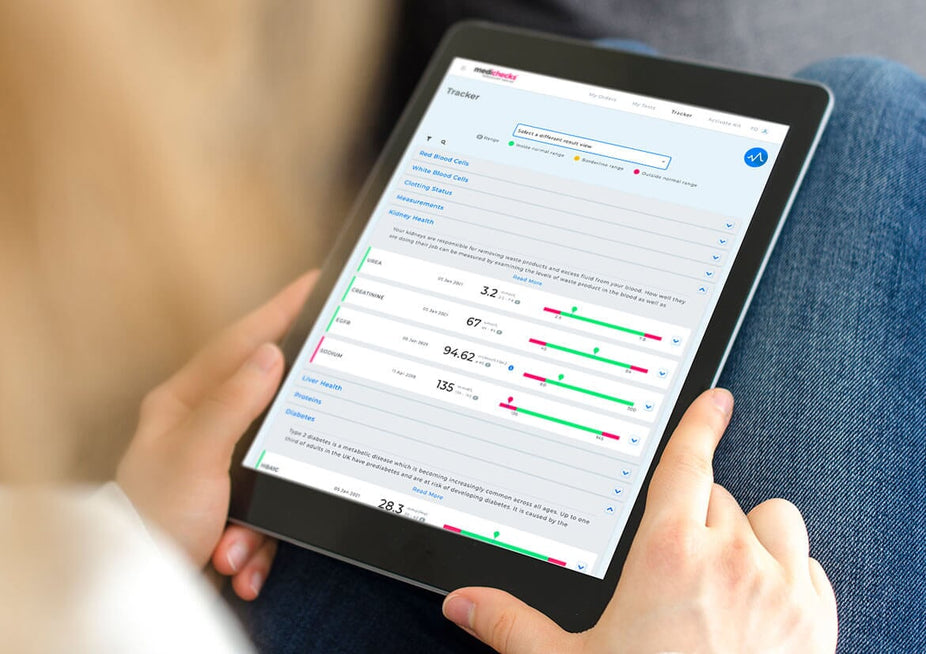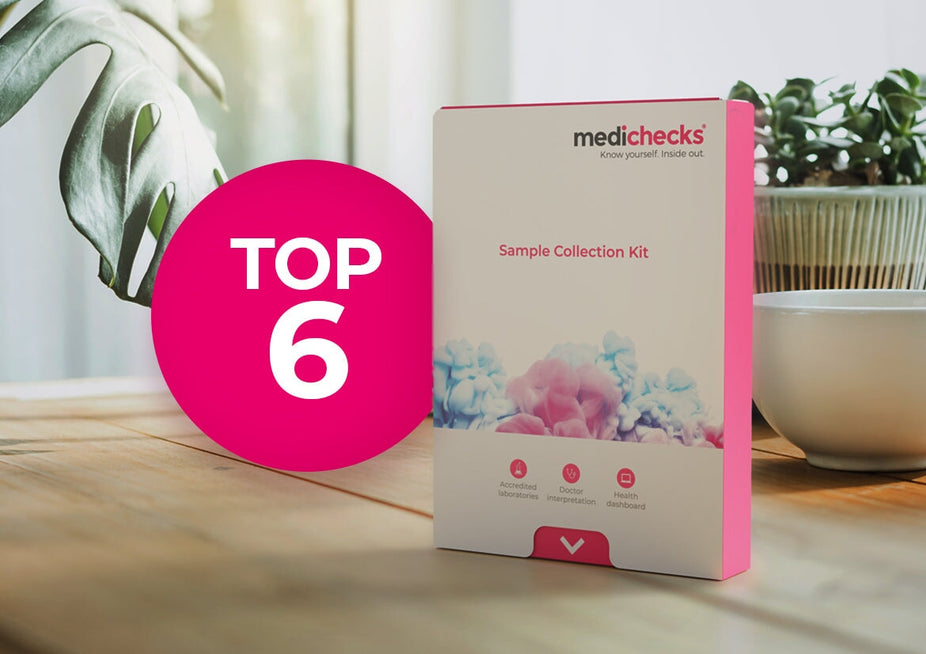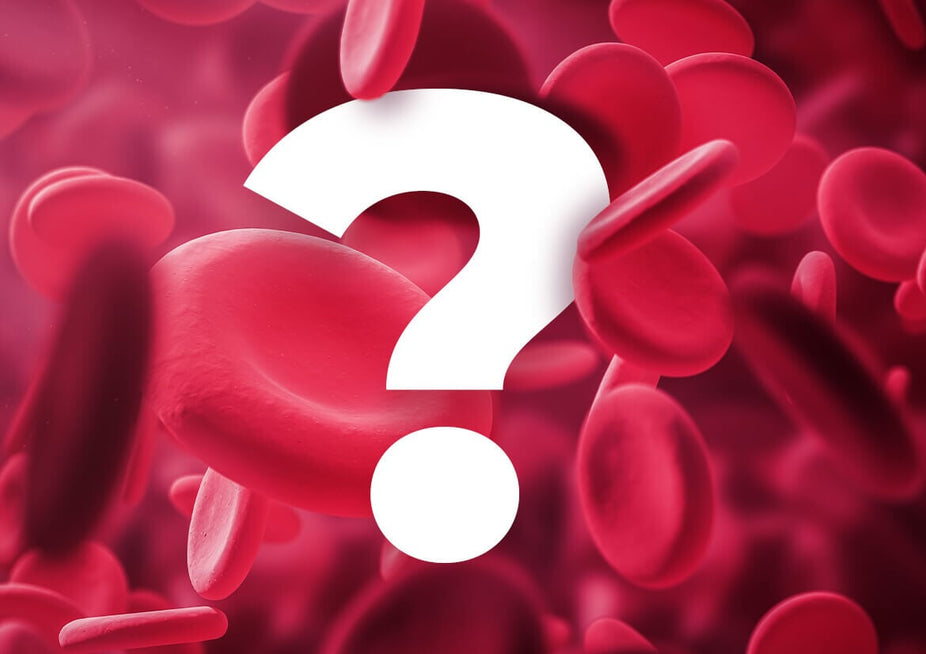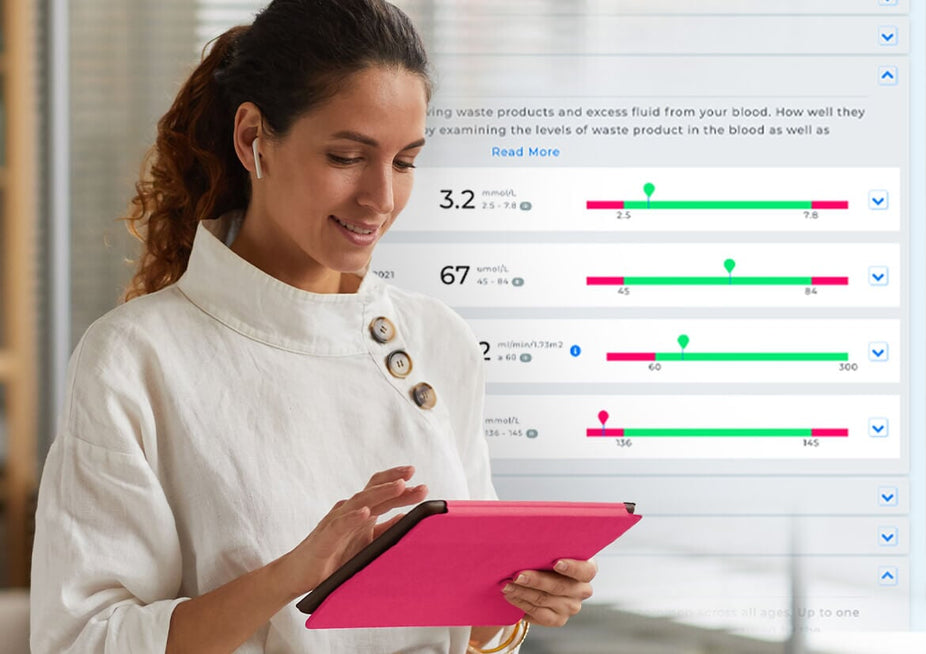How does a blood test work?
Learn everything you need to know about preparing for and taking your blood test.
You may choose to have a blood test to investigate a health concern, optimise your sports performance, track, and monitor lifestyle changes, or just for peace of mind.
To help you prepare for a blood test and understand how you’ll get your results, we discuss everything you need to know about how a blood test works, including:
- How blood is collected
- Where can I get a blood test?
- How to prepare for and take a blood test
- What causes blood sample errors?
How blood is collected
The two main ways to collect a blood sample are by taking blood from a vein (a venous sample) or a finger-prick collection.
1. Venous blood sample
A qualified healthcare professional will use a needle to take blood from a vein, usually in your arm. The blood is collected into a tube (or several, depending on the test), allowing for a large volume of blood to check all necessary biomarkers.
2. Finger-prick sample
With a finger-prick test, you will prick your finger with a lancet and collect a sample of blood. You can do a finger-prick blood test yourself, at home, and it’s considered less invasive than a venous sample.
While finger-prick tests can perform a wide range of blood tests, it’s not possible to test every biomarker this way – especially if a large volume of blood is required.
Where can I get a blood test?
NHS blood tests
Blood testing is one of the many services the NHS provides either at your GP surgery or local hospital. Blood testing helps to investigate symptoms and diagnose a condition. A trained clinician will take your blood, usually from a vein in your arm, and the blood will be sent to a laboratory to be analysed.
Private blood tests
Private blood tests can be ordered online and taken at home or a clinic. You may choose to collect your sample with a finger-prick test or have a medical professional take your blood for a venous test. At Medichecks, we work with a network of clinics that you can visit to have your sample collected.
Laboratory testing and results are subject to stringent internal and external quality control procedures. Our partner laboratories are fully accredited and are committed to the highest clinical standards. We choose to work with laboratories that have been inspected by the United Kingdom Accreditation Service (UKAS). Have a look at how blood testing laboratories are regulated.
How to prepare for and take a blood test
To help increase blood flow, you can:
- Hydrate well – Drink a glass of water in the hour before you do the test.
- Get your blood flowing – Some activities may help to increase your blood flow. Try having a hot shower, washing your hands in warm water, or jumping on the spot for a few minutes.
- Massage your finger – For finger-prick samples, squeeze your hand to fingertip five-six times to warm the finger and increase blood flow.
- Stand up – Let gravity help you by standing up with your hand pointing down when you are collecting your sample.
Does a blood test hurt?
It is completely normal to feel nervous before a blood test. However, there is no need to be - the process is quick and straightforward.
With a venous blood test, you may feel a sharp scratch when the needle goes in, but drawing the blood isn’t painful. Your arm can bruise afterwards at the site where the needle went in, though this doesn’t happen often.
For a finger-prick blood test, you will feel a scratch and pinch on your finger in the area where the lancet goes in. This area may be slightly tender for a little while after taking your sample.
Will there be enough blood from a finger-prick sample?
Some private blood tests only require a small sample of blood. With Medichecks, the option of a finger-prick test will only be available where the laboratory can analyse results from only a few drops of blood. Usually, around eight to ten drops of blood fill a finger-prick tube.
In some cases, you may not collect enough blood from your finger. However, in most cases, you will be provided with more than one lancet so you can try again on another finger.
If you are unsure what to expect, check out our top tips for taking a finger-prick blood test.
What time of day should I take my blood test?
Unless stated otherwise, it is best to take your blood sample in the morning. Hormone levels are at their highest in the morning, so collecting your blood in the morning will give the best results for hormone tests. If you need to fast before taking your blood test, it is often easiest to fast overnight whilst you sleep.
Taking your sample in the morning gives you a good chance to get the sample to the laboratory as soon as possible as you can post it on the same day.
Will a blood sample degrade in the post?
Generally, blood markers are stable for several days before they deteriorate. So, it is perfectly acceptable to test a sample that has been sent through the post [1].
Markers that start to degrade more quickly (such as potassium and homocysteine) are not suitable for postal samples, nor are those like calcium and insulin, which deteriorate quickly when the temperature rises (e.g. during the summer) [1]. If you are looking to test these markers privately, you may have to visit a particular laboratory or clinic.
How long does it take to get blood test results?
Depending on your test, blood test results can take anything from a few hours to a few weeks to be processed.
Unless you're a qualified medical professional, your blood test results will be interpreted by a clinician before you get the results. With a Medichecks test, you’ll get everything through to your online dashboard, where you’ll see the normal range for results and where you sit within that range.
Do I need a doctor’s referral for a blood test?
Many private blood tests do not require a doctor’s referral. For more specialist tests, a doctor’s referral may be required.
What causes blood sample errors?
Occasionally, blood sample errors happen. They can happen for a variety of reasons and usually mean that a sample cannot be tested, or the full range of tests cannot be performed.
The most common causes of blood sample errors include [2]:
- A clotted sample - Most samples, including ones taken in yellow-top tubes (our most common sample type), contain a chemical which encourages the blood to clot. However, some samples must not clot as clotting can lead to error. For these types of samples, different tubes are used that contain an anticoagulant on the surface - which stops the blood from clotting. Clotting can occur if your blood does not mix properly with the anticoagulant or if it takes too long to collect your sample, and the blood clots before it can mix. This is why it is encouraged to tip (not shake) your blood sample upside down a few times. If your blood clots, the lab will be unable to process it, or you may get abnormal results. E.g., your platelet count may come back as abnormal.
- Haemolysed sample - A haemolysed sample occurs when some of the red blood cells burst. The haemoglobin (which transports oxygen and iron around the body) within the cells then escapes and spoils the surrounding sample. With finger-prick samples, this can happen if you squeeze your finger too hard to get the blood out or if you scrape your finger on the side of the tube rather than letting the droplets drop down gently. Vigorously shaking the tube can also cause blood cells to burst – it is best to gently invert the tube instead. Venous blood tests can also be affected by haemolysis when there are difficulties in taking the sample, although this is less common.
- Insufficient sample - If the sample of blood taken is too small, the laboratory will struggle to get enough plasma from it for testing. This usually occurs if the blood tube has not been filled to the upper line.
You can find more about what can influence blood tests in our understanding your blood test results section.
References
- Wu, D., Li, Y. and Wang, F., 2017. How Long can we Store Blood Samples: A Systematic Review and Meta-Analysis. EBioMedicine, 24, pp.277-285.
- net. 2022. common lab error , and effect of anticoagulant. [online] Available at: <https://labpedia.net/common-lab-errors-and-effect-of-various-anticoagulants-on-tests/> [Accessed 28 January 2022].







